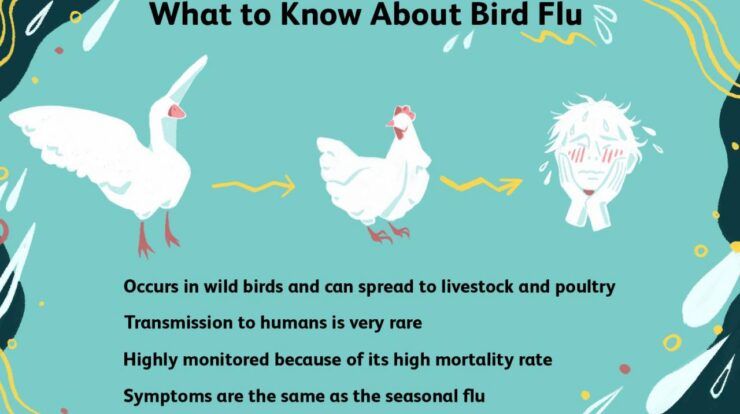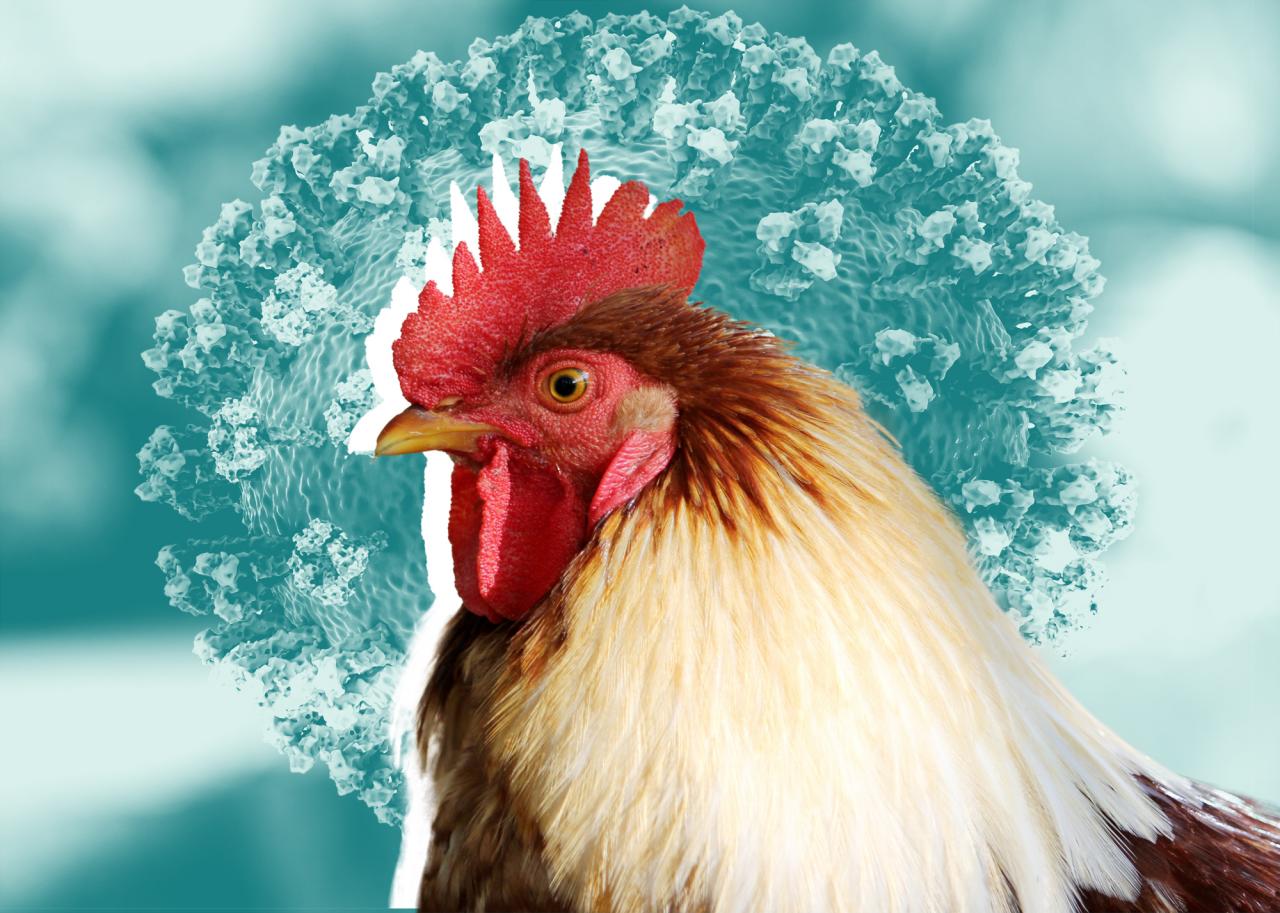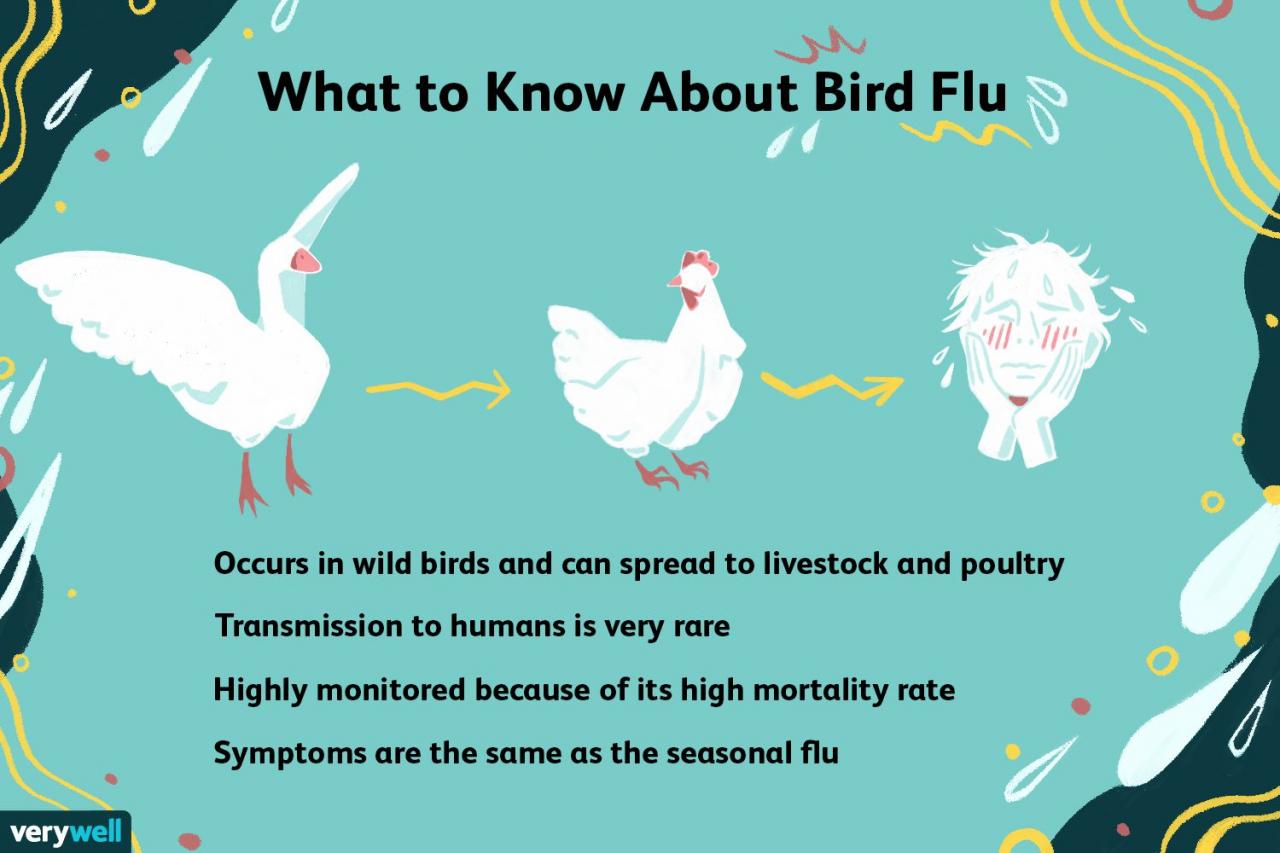
Bird flu virus milk – Bird flu virus in milk has emerged as a pressing concern, raising questions about the potential risks to human health and the dairy industry. This article delves into the transmission routes, impact on milk production, public health implications, and preventive measures associated with this issue.
The presence of bird flu virus in milk has raised alarms due to its ability to spread through poultry populations and potentially contaminate milk. Understanding the factors influencing transmission, such as pasteurization and storage conditions, is crucial for mitigating risks.
Transmission of Bird Flu Virus through Milk

Bird flu virus, also known as avian influenza virus, has the potential to be transmitted through milk and milk products. The virus can enter the milk supply through infected poultry, either through direct contact with the milk or through contamination of the milking equipment.
Pasteurization, a process that heats milk to a high temperature, can kill the virus and prevent transmission through milk. However, if milk is not properly pasteurized or if contamination occurs after pasteurization, there is a risk of transmission.
Factors Influencing Transmission
- Pasteurization: Pasteurization is the most effective way to prevent the transmission of bird flu virus through milk. Pasteurization involves heating milk to a temperature high enough to kill the virus without compromising the nutritional value of the milk.
- Storage conditions: The storage conditions of milk can also affect the likelihood of transmission of bird flu virus. Milk should be stored at a temperature of 4°C (39°F) or below to prevent the growth of bacteria and viruses.
- Source of milk: The source of milk is also an important factor to consider. Milk from infected poultry is more likely to contain the bird flu virus. Therefore, it is important to purchase milk from reputable sources that have implemented biosecurity measures to prevent the spread of the virus.
Impact of Bird Flu Virus on Milk Production

Bird flu outbreaks can have a significant impact on poultry populations and milk production. Infected poultry may experience reduced egg production, increased mortality, and other health problems. This can lead to a decrease in the supply of milk and milk products, which can have economic consequences for dairy farmers and the industry as a whole.
Economic Consequences
- Reduced milk production: Bird flu outbreaks can lead to a decrease in milk production, which can result in lower profits for dairy farmers.
- Increased costs: Dairy farmers may incur additional costs due to the need to implement biosecurity measures and purchase antiviral drugs to prevent the spread of the virus.
- Market disruptions: Bird flu outbreaks can disrupt the milk market, leading to price fluctuations and uncertainty for dairy farmers.
Public Health Concerns

The consumption of milk or milk products from infected poultry can pose a risk of bird flu virus infection for consumers. The virus can cause a range of symptoms in humans, including fever, cough, sore throat, muscle aches, and fatigue.
In severe cases, bird flu virus infection can lead to pneumonia, respiratory failure, and even death.
Measures to Prevent Outbreaks, Bird flu virus milk
- Surveillance: Health authorities conduct surveillance to monitor for bird flu outbreaks and identify infected poultry populations.
- Control measures: Control measures are implemented to prevent the spread of bird flu virus, including quarantine of infected flocks, movement restrictions, and vaccination programs.
- Public education: Public education campaigns are conducted to raise awareness about bird flu virus and the importance of consuming safe milk and milk products.
Preventive Measures
There are several measures that can be taken to prevent the spread of bird flu virus through milk:
- Pasteurization: Pasteurization is the most effective way to prevent the transmission of bird flu virus through milk. All milk and milk products should be pasteurized before consumption.
- Hygiene practices: Proper hygiene practices, such as washing hands and surfaces, can help to prevent the spread of the virus.
- Biosecurity measures: Biosecurity measures, such as restricting access to poultry farms and using protective clothing, can help to prevent the introduction of the virus into poultry populations.
Research and Surveillance
Ongoing research is being conducted to better understand bird flu virus and its transmission through milk. This research includes studying the virus’s genetic characteristics, developing new diagnostic methods, and evaluating the effectiveness of preventive measures.
Areas for Further Investigation
- Understanding the mechanisms of transmission: Further research is needed to better understand how bird flu virus is transmitted through milk and milk products.
- Developing improved diagnostic methods: Improved diagnostic methods are needed to quickly and accurately identify bird flu virus in milk and milk products.
- Evaluating the effectiveness of preventive measures: Ongoing research is needed to evaluate the effectiveness of preventive measures, such as pasteurization and biosecurity measures, in preventing the spread of bird flu virus through milk.
Final Thoughts: Bird Flu Virus Milk

In conclusion, bird flu virus in milk poses potential risks to human health and the dairy industry. While pasteurization and proper hygiene practices can reduce transmission, ongoing research and surveillance are essential for improving our understanding and developing effective prevention strategies.
Consumers should be aware of the potential risks and follow guidelines issued by health authorities to minimize exposure.





